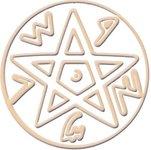Lecturer: Ms. Maria Krakovsky, Institute of archaeology, The Hebrew University of Jerusalem
The chaîne opératoire approach applied to the study of the lithic assemblages suggests that in the course of the reduction sequence the knapper can choose among several equally suitable technological alternatives in order to achieve a certain result. It is assumed that if similar technological choices were made repeatedly by knappers at similar points of the production sequence, and these choices are recurrent in several successive layers of a one site, this might imply an existence of a 'traditional' way to produce an artefact at that site. To test the assumption, Levallois triangular blanks (including points) from the Amud cave (subunits B1, B2 and B4) and Kebara cave (units XI and X) were chosen. Also in this study was made an attempt to explore whether the existence (or lack) of a technological tradition can be explained by the models of Cultural Transmission (CT) theory.
The study of the blanks was conducted through a geometric-morphometric shape analysis, attribute analysis and descriptive and inferential statistics. The results suggest that recurrent technological patterns within the reduction sequences and along the stratigraphic column are identifiable at the sites. Additionally, while at both sites similar technological procedures were used there are associations among specific technological variables that are difficult to explain through functional or mechanical causation. CT models provide possible explanations to some of these patterns. The identification and study of the possible 'traditional' behaviour during the Middle Palaeolithic can shed light on the social structure of Palaeolithic humans and expand further our understanding of the maintenance of technological knowledge as it is reflected in the material culture studied by the prehistorians.
Reading:
Eerkens, J. W. and Lipo, C. P. 2007. Cultural Transmission Theory and the Archaeological Record: Providing Context to Understanding Variation and Temporal Changes in Material Culture. Journal of Archaeological Research 15:239-274.
Hovers, E. and Belfer-Cohen, A. 2013. On variability and complexity: lesson from the Levantine Middle Palaeolithic record. Current Anthropology 54, supplement 8: S337-S357.

